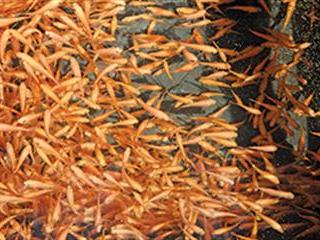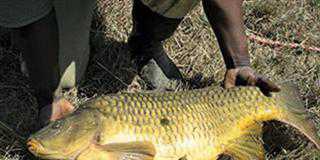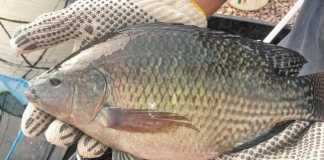
Tilapia farming, being an activity relatively new to South Africa, is going through its birth pains. Urban legends, misinformation, half-truths and a general lack of practical (as opposed to theoretical) information are rife. Numerous system designers and consultants make glowing promises, but without physical or tangible proof of the success of their systems. The spirit of co-operation so evident in Asia is unfortunately largely absent in South Africa and tilapia farmers are left feeling that they’re on their own.
This results in small-scale operators attempting the impossible and trying to do everything themselves. That is, breeding the fish, growing the fish and marketing the fish. But these involve three very different skills, not easily mastered by a fledgling (or should I say ‘fingerling’?). Consider breeding. So many say they want to breed their own fingerlings, and then simply obtain a few hundred, probably closely-related, fish.
But breeding programmes, be they for cattle, sheep, chickens, or even crops such as maize, require time and specialised knowledge to develop better-performing ‘seed’ with attributes such as (for fish): improved growth rates, better body form, resistance to disease, ease of domestication and flesh quality. Large-scale facilities are required where various lines, or strains, are kept separately and cross-bred or line-bred over several generations to isolate traits favourable to aquaculture.
Inbred
You certainly can’t achieve any of this by dumping 100 sibling (closely-related) fish in a porta-pool and saying that you want to breed your own…The almost inevitable result is that, after a very short period, the fish become inbred and more disease-prone and growth rates decrease, and eventually the farmer gives up in disgust. With mortalities increasing and the growth rate declining, it’s not worth spending the money on feed, never mind running costs such as electricity and the wages of skilled hatchery staff. And so tilapia farming is once again described as being ‘not worth doing’.
A good example
The well established chicken broiler industry in South Africa provides a good example of the kind of system I’m talking about.
Here, specialised hatcheries produce reliable quantities of top quality day-old chicks, and these are despatched countrywide to grow-out facilities. The final product is then marketed professionally and reaches your table in good condition. The actual chicken farmer, the one who does the growing of the bird, only has input in the middle stage.
So should it be with tilapia aquaculture if it’s going to succeed in SA. Why put a half-hearted effort – and considerable expense – into trying to produce a few thousand tilapia fry or fingerlings of ever-diminishing quality when top quality fish are available commercially at around a landed cost of R1 per fish?
Tough questions
Prospective tilapia breeders, then, should ask themselves if they can fund, design and erect a 30m RAS (re-circulating aquaculture system) tunnel-system, complete with filtration, containing about 60 large breeding tanks, and purchase and transport about 400 to 500 adult or sub-adult size fish, that can be guaranteed to not be closely related?
Are there also funds and space to set up a heated and insulated indoor fry-rearing hatchery with its own filtration system, incubators and fry sex-reversal tanks, and space to raise batches of different cohorts of tilapia fry? Who will be paid to catch, sort, feed and care for the fry on a full-time daily basis? These are the questions that will determine if it’s worthwhile breeding fingerlings, or whether it’s better to concentrate on the challenges of rearing them to market size.
Nicholas James is an ichthyologist and hatchery owner. Contact him at [email protected]. Please state ‘Aquaculture’ in the subject line of your email.













